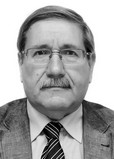Tactical problem solving algorithms for judokas of various skill levels
Фотографии:
ˑ:
Dr.Hab., Professor A.G. Levitsky1
Dr.Hab., Professor G.V. Rudenko2
D.A. Simakov2
1Lesgaft National State University of Physical Education, Sport and Health, St. Petersburg
2St. Petersburg Mining University, St. Petersburg
Objective of the study was to identify differences and peculiarities of solution of tactical task by judokas.
Methods and structure of the study. The following methods were applied during the study: survey in the form of conversations, analysis of videos and transcripts of competition fights, as well as vestibular stability testing.
Results of the study and conclusions. During the study, we analyzed different technical and tactical task solving algorithms, which reflected the peculiarities of competitive performance of the athletes at the stages of sport specialization, sport excellence and top mastery. The athlete’s behavior during competitions is largely determined by the competition rules, the goals set by the athlete, and the arsenal of his technical actions. A fighter’s behavior is greatly affected by the system of actions of his opponent.
During the competitive bouts, the judokas with the high level of vestibular stability, in the vast majority of cases, acted according to the most complex algorithm of combinational style of competitive activity, with little if any use of the simple one. The judokas with the low level of vestibular stability, on the contrary, operated according to the simple algorithm, resorting to a more complex one in rare cases.
Consequently, it can be said that there is a relationship between the athlete’s level of vestibular stability and the nature of his behavior during a bout.
Keywords: judo, competitive activity, tactical problem solving algorithms.
References
- Belov A.V. Nachalnoe obuchenie dzyudoistok tehnike borbyi [Beginner technical training in women's judoka]. PhD diss.. St. Petersburg, 2000. 171 p.
- Volkov A.V., Panchenko I.A., A.P. Babchenko Velichina i napravlennost trenirovochnyih nagruzok – osnovnyie faktoryi upravleniya dinamikoy rabotosposobnosti dzyudoistov [Training load volume and goal as key factors of performance control in judo]. Teoriya i praktika fiz. kulturyi. 2017. # 7. pp. 66-68.
- Demin V.A., R.A. Piloyan, V.S. Sedlov Deyatelnostny analiz bortsovskih poedinkov [Activity analysis of wrestling fights]. Wrestling: Yearbook. M., 1979. pp. 60-65.
- Levitskiy A.G. Upravlenie protsessom podgotovki dzyudoistov s uchetom urovnya individualnoy gotovnosti k sorevnovatelnoy deyatelnosti [Management of training process in judo based on individual competitive fitness level]. Doct. diss.. (Hab.). St. Petersburg, 2002. 438 p. il.
- Beissner C., Birod M. Judo. Training, Tecnik, Taktik. Hamburg, 1982. 220 p.
- Czech G., Jurgens D., Peukert E. Freier Ringkampf. Berlin: Sportverlag, 1974. 132 p.
- Müller-Deck H., Lehman G. Judo. Berlin: Sportverlag, 1983. 160 p.



 Журнал "THEORY AND PRACTICE
Журнал "THEORY AND PRACTICE